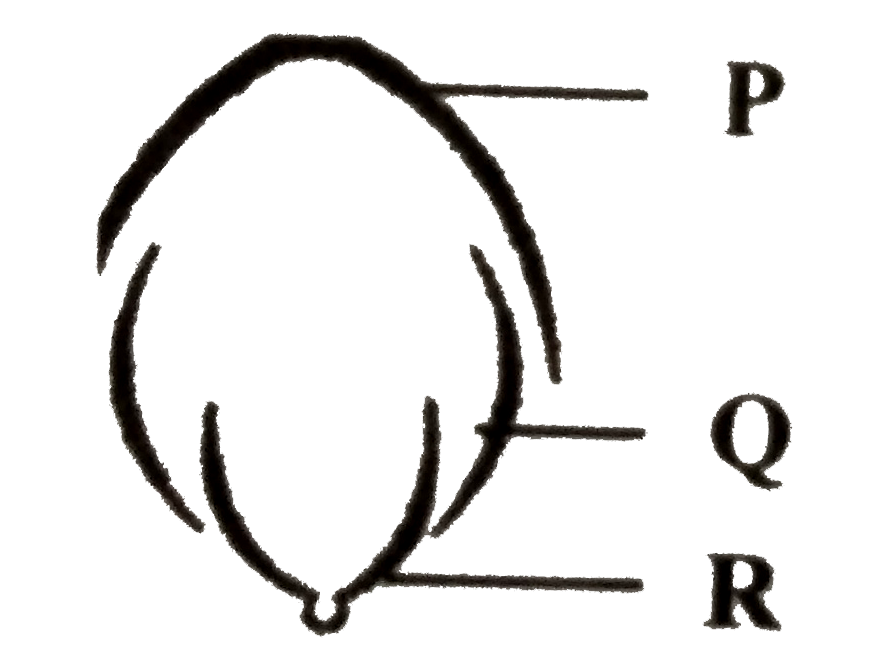In vexillary aestivation, keel represents
The largest posterior petal
Two smaller lateral petals
Two smallest anterior petals
The largest anterior petal
To answer the question "In vexillary aestivation, keel represents," we need to understand the structure of the flower in vexillary aestivation. Here’s a step-by-step solution:
Step 1: Understand Vexillary Aestivation
Vexillary aestivation is a type of floral arrangement where the petals are arranged in a specific manner. In this arrangement, there are five petals: one large petal (the standard), two lateral petals (the wings), and two smaller anterior petals (the keel).
Step 2: Identify the Petals
- Standard Petal: This is the largest petal and is located at the back.
- Wings: These are the two lateral petals that are positioned on either side of the standard.
- Keel: This consists of the two smaller anterior petals that are fused together, forming a structure that resembles a boat.
Step 3: Analyze the Options
Now, let's analyze the options provided:
1. Largest posterior petal (this refers to the standard petal, which is incorrect).
2. Two smaller lateral petals (this refers to the wings, which is incorrect).
3. Two smaller anterior petals (this correctly describes the keel).
4. Large anterior petal (this refers to the standard petal, which is incorrect).
Conclusion
Based on the analysis, the correct answer is that in vexillary aestivation, the keel represents the two smaller anterior petals.
Final Answer
The keel represents the two smaller anterior petals in vexillary aestivation.
---
Vexillary aestivation is a type of floral arrangement where the petals are arranged in a specific manner. In this arrangement, there are five petals: one large petal (the standard), two lateral petals (the wings), and two smaller anterior petals (the keel).
- Standard Petal: This is the largest petal and is located at the back.
- Wings: These are the two lateral petals that are positioned on either side of the standard.
- Keel: This consists of the two smaller anterior petals that are fused together, forming a structure that resembles a boat.
Now, let's analyze the options provided:
1. Largest posterior petal (this refers to the standard petal, which is incorrect).
2. Two smaller lateral petals (this refers to the wings, which is incorrect).
3. Two smaller anterior petals (this correctly describes the keel).
4. Large anterior petal (this refers to the standard petal, which is incorrect).
Based on the analysis, the correct answer is that in vexillary aestivation, the keel represents the two smaller anterior petals.
The keel represents the two smaller anterior petals in vexillary aestivation.
Topper's Solved these Questions
Similar Questions
Consider the following four statements A,B,C and D and select the right option for two correct statements :-
(A) In vexillary aestivation , the large posterior petal is called-standard , two lateral ones are wings and two small anterior petals are termed keel.
(B) The floral formula for Liliaceae is

(C) In pea flower the stamens are monoadelphous
(D) The floral formula for Solanaceae is

The correct statements are :-
View SolutionIn vexiallary aestivation,posterior petal is known as
View Solution
Knowledge Check
Consider the following four statements (i),(ii),(iii) and (iv)
(i) In vexillary aestivation, the large posterior petal is called standard, two lateral ones are called wings and two small anterior petals are termed as keel
(ii) The floral formula for Liliaceae is

(iii) In pea flower, the stamens are monadelphous
(iv) The floral formula for Solanceae is

The correct statement areA(i) and (iii)B(i) and (ii)C(ii) and (iii)D(iii) and (iv)In vexillary aestivation, largest petal, two smaller lateral petals and two smallest anterior petals are referred as _____, _____ and _____, respectively.
AWings, keel, standardBStandard, wings, keelCStandard, keel, wingsDKeel, standard, wingsConsider the following four statements A, B, C and D select the right option for two correct statements
(A) In vexillary aextivation, the large posterior petal is called - standard, two lateral ones are wings and two small anterior petals are termed keel
(B)
(C) In pea flower the stamens are monadelphous
(D)
The correct statement areA(A) and (C)B(A) and (B)C(B) and (C)D(C) and (D)
Diadelphous stamens, vexillary aestivation, marginal placentation and nodulated roots are diagnostic features of plants belonging to family
View SolutionVerxillary aestivation is seen in
View SolutionThe given figure represents vexillary aestivation. Select the suitable labels for P,Q and R

View SolutionZygomorphic flower with vexillary aestivation, diadelphous androecium and marginal placentation occurs in
View SolutionWhich of the following plants has the floral characters like zygomorphic flower, vexillary aestivation, diadelphous androecium and marginal placentation.
View Solution
